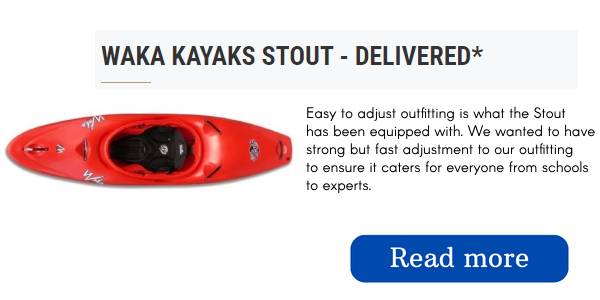To find out how many people can be accommodated in a canoe, you must work out its maximum load-bearing capacity.
A significant amount of canoes can accommodate two people, with some allowing a third person to join them. There are canoes that can accommodate four or more people for paddling.
It is beneficial to check out the producer’s suggested highest weight limit when attempting to calculate the number of people that can fit in a canoe.
Different sizes of canoes exist, with the longer canoes providing more suitability to multiple people paddling them. To assist you in determining which size canoe will be beneficial for you and your paddling companions, we have compiled some helpful details.
The most weight that a 12-foot canoe can hold, including both passengers and materials, is 400 pounds, while a 16-foot canoe is capable of carrying up to 1000 pounds. A 17-foot canoe is capable of accommodating a weight of 1200 pounds, while an 18-foot version can accommodate 1400 pounds and a 20-foot canoe can handle up to 1900 pounds.
What Affects a Canoe’s Weight Load Limit?
The load that can be safely held in a canoe varies depending on the size and shape of the craft, so it would not be appropriate to give a universal answer that covers all cases. There are several elements that influence how much a canoe can support. Some factors are length, width, depth, material, construction methods.
Canoes which are heavier, like aluminum and fiberglass, typically have less capacity for weight than those which are made from kevlar or ultra-light composite materials.
The chart below displays the greatest amount of weight that can be held (sometimes referred to as the “industry capacity”). This should not be regarded as the accepted amount of weight to carry, and it is hazardous. The majority of canoe companies give an additional rating, known as “Optimum Load Range”, that represents the most suitable, productive, and secure loading limit.
It is called a “range” because usually it will span a few hundred pounds. As a guideline, the best amount to load is typically around half of the maximum load capability.
It is essential to be aware that having a weight load that is too high (less than 6″ of freeboard) and one that is too light (or nonexistent) can be problematic. You can tell if you are too light if your canoe does not sink into the water more than an inch or two and stays on top of the surface.
Freeboard
Manufacturers of canoes employ a measurement known as freeboard when constructing a boat. The distance between the side rails of a boat in the middle and the waterline is similar to the plimsoll lines of a freighter.
The more space above the waterline your boat has, the more likely you are to stay dry, but it also makes your boat more susceptible to being buffeted by the wind.
If less of the canoe is showing above the water, increased risk of getting wet from waves is more likely, and if the waves are large, there is potential for the canoe to become flooded and overturn.
Is a Heavier Canoe More Stable?
The weight of the cargo definitely has an effect on the stability of a canoe, and it is true that a canoe with a lot of cargo will appear to be less wobbly than an empty canoe. Aside from payload weight, there are a variety of other things that influence a canoe’s steadiness significantly.
The shape of the canoe and having outriggers attached both greatly affect the stability.
What if my Load is Too Heavy or Too Light?
The outcomes of being too heavy on your canoe can vary from unsteady movement due to the wave crashing up against the edge of the boat to being completely submerged by the wave because of its heaviness and inability to rise up above it quickly enough, allowing the water to flood in.
The consequences of being too light are also dangerous. Even a slight breeze can cause a solo paddler in an ultra-lightweight 18-foot Kevlar tripping canoe without any cargo or another person onboard to come off their intended course and put themselves in a difficult situation.
The lightweight Kevlar canoe has no gear, making it behave like a sailboat, making it hard to fight the wind with paddling motions. If a stronger gust of wind comes in contact with the bottom of the boat, you can be overturned with no help from another person or any apparatus to make the boat more anchored and resistant to the wind.
How Much Weight Can my Canoe Handle?
Below are some average weights for the most common sizes, though some manufacturers produce 12-foot canoes. Typically, these kayaks are designed for just one person, and they can hold up to 400 lbs.
| CANOE LENGTH IN FEET | AVERAGE WEIGHT LOAD CAPACITY IN POUNDS |
| 13 | 575 |
| 14 | 700 |
| 15 | 825 |
| 16 | 973 |
| 17 | 1073 |
| 18 | 1362 |
| 19 | 1670 |
| 20 | 1800 |
The Law – How Many People Are Allowed To Fit Into A Canoe?
The United States Coast Guard mandates that any motor boat measuring less than twenty feet long must have a capacity sash affixed to its wall. No law necessitates canoes, kayaks, or sailboats. However, if the canoe comes with a motor or is meant to have one installed, it must have this decal.
Most canoes with a square-shaped back have been designed to have a trolling motor mounted on them. When buying one of these canoes, it typically comes with a capacity decal attached.
The decal indicates the maximum capacity for passengers, load, and power of the boat. If you were stopped by the police, you might be in violation of the law if any of these totals were exceeded.
If three people were boarding a motorized canoe that has a weight limit of two individuals, the capacity regulations would still be exceeded even if the three people did not exceed the maximum load.
Non-motorized canoes do not typically need to adhere to the weight restrictions, but if you add too much weight to the boat it could affect its performance negatively.
The UK and Australia usually advise against surpassing the most weight permissible in a canoe, as exceeding the limit can be hazardous and can compromise the steadiness of the vessel.
How Many People Can Fit In A Canoe? (Canoe Person Sizes)
Typically, the capacity of a canoe is determined by its dimensions. In general, the bigger the canoe, the greater the capacity for weight and therefore the larger the number of people that it can accommodate.
Calculating Weight Capacity
You can approximate the maximum amount of weight that your vessel can hold, even if there is no label giving this information. Calculate the size of your canoe by measuring its length and width in feet.
Take the length measured in feet and multiply it by the width measured in feet. Then divide this by 15. This will allow you to calculate how many people your canoe can handle, taking into account one person of 150 pounds. You can alter this by altering the divisor. For instance, 18 calories per day for somebody who weighs 180 pounds.
You can determine the weight capacity by multiplying the figure you obtain by the average weight of a person.
A canoe that is 16 feet long and 3 feet wide can accommodate three people at most, assuming the average weight per person is 150 pounds. This would yield a total capacity of 480 pounds (16 multiplied by 3 equals 48, divided by 15 equals 3.2, multiplied by 150 equals 480).
1-Person (Solo) Canoe
A single canoe is usually crafted with a single seat, which usually results in it being smaller in size than a canoe that is equipped with multiple seats. This is to make it simpler for one individual to move it. Solo canoes will typically hold less weight than bigger canoes.
If you intend to canoe alone in a one-person vessel, you will find that it is still quite spacious enough to fit your supplies or even your pet dog.
It is often simpler to move a one-person canoe due to the fact that they generally have a lower weight when compared to multiple-person canoes. The size of them can vary, usually from approximately 13 to 14 feet, but there may be some that are shorter or taller than this.
A solo canoe does not offer as much flexibility as a two-person canoe, since only one person can paddle it. The maximum weight that can be supported may be much lower than what is usually seen in a double-person boat.
2-Person (Tandem) Canoe
Many of the canoes that you will come across, either when you are out on a body of water or from a canoe rental shop, are usually designed to accommodate two persons. These boats usually accommodate two people paddling, which can require some adjustment if you are used to solo rowing, however, their capacity for occupants may vary.
In numerous instances, tandem canoes possess a centralized seat or capacity for a third individual, like a youngster, thus they can also be identified as three-person watercrafts.
Paddling a two-person canoe by yourself can be a bit challenging due to the increased size of the vessel and the contrasting weight balance, though it is feasible. You might have to modify how you paddle when doing this, and you could even be in the boat facing the reverse direction.
Generally, tandem canoes are usually longer than ones designed for one person, and their sizes range typically from 14 to 17 feet, although this may differ depending on the brand and style.
A double-hulled canoe might be perfect for family camping journeys, but if you have a family of four, it might be a good idea to bring two of them for optimum convenience.
3-Person Canoe
A canoe designed for three people has the capacity to hold three individuals, however it can usually be operated with fewer occupants. For instance, some double-ended canoe may also be classed as such.
Canoes of this style are well-suited for three-person paddling, as the space allocated per person is adequate for a comfortable journey, plus there is plenty of room for carrying any needed supplies.
Canoes created for three persons may be longer, resulting in more effort when moving them on land and more challenging to guide on the water. It may not be as problematic if you have three people to help you as opposed to doing it alone.
Triple person canoes can be around the same size as double canoes and usually measure 14 to 17 feet long.
4-Person Canoe And More
Boats that can accommodate more than four people are relatively rare. The extra weight requires more length, which is why this is necessary. It can be harder to move them around and put them away, plus they usually cost more.
A multi-person canoe could be a great option for trips where rules must be followed, especially when travelling in Minnesota’s Boundary Waters and Canada’s Quetico Wilderness region.
No more than four canoes and nine people are allowed in this zone. Therefore, in order to comply in a party of nine, you must bring at least one canoe with seating space for more than two.
Canoes that can accommodate four people usually measure approximately 20 feet. It can be difficult to locate a canoe designed to fit more than four people. If your group is larger than four, it might be better to use more than one canoe.
Wrapping Up
When attempting to determine which size canoe would be most appropriate for you, it may be beneficial to contemplate if you will be paddling with someone else. For those who normally paddle with a partner but sometimes have to paddle solo, a two person canoe can be an excellent choice as these can generally be used for both team and individual paddling.
It is also important to remember that the manufacturer will usually suggest a weight limit for the canoe in addition to the maximum number of people that it can accommodate. Staying within this limit is the best option for safety.




